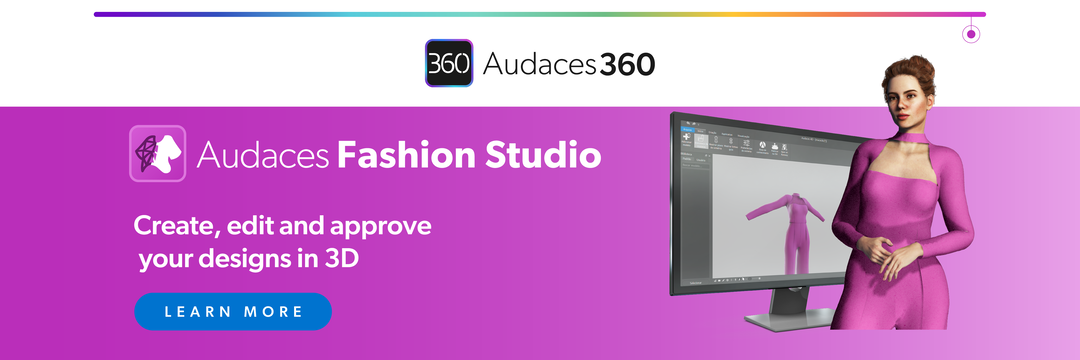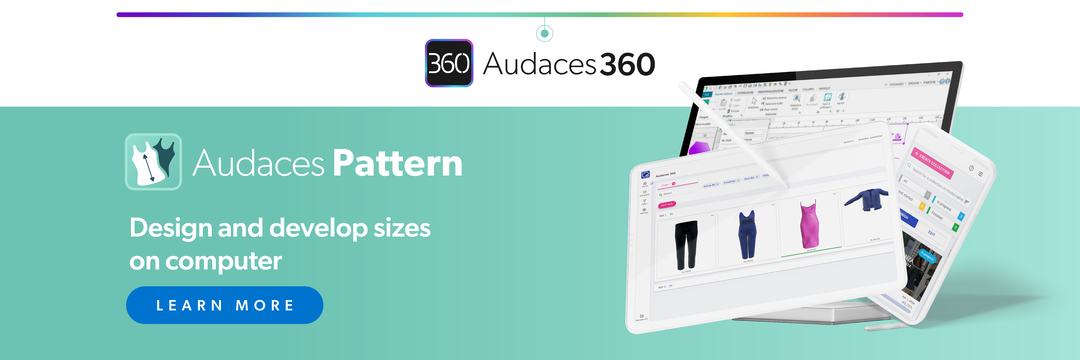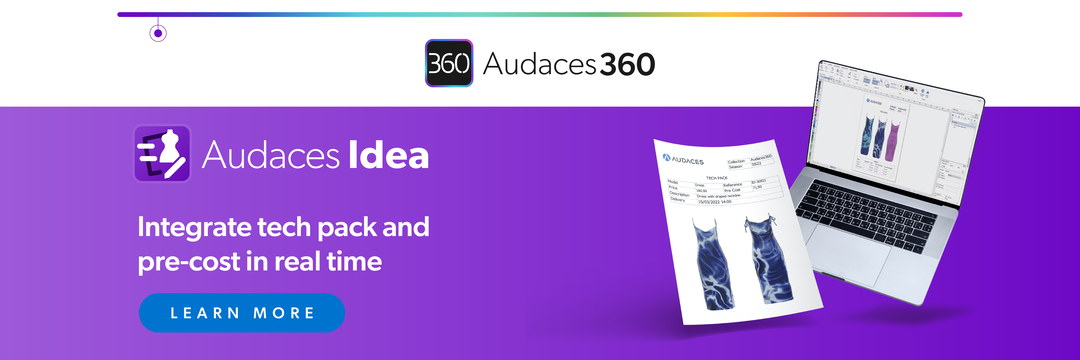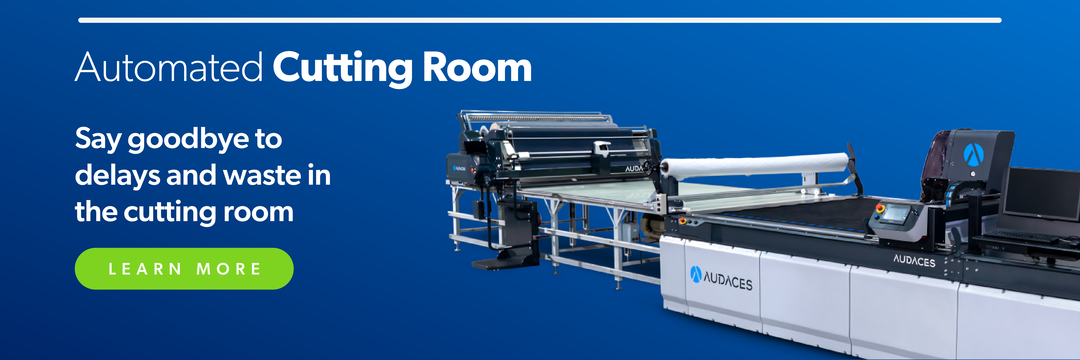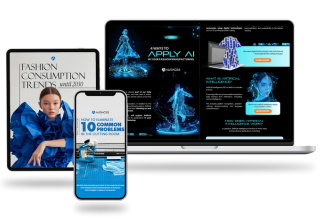Summary
- The fashion industry didn’t grow on creativity alone. Behind many of its biggest leaps is a powerful force: industrial production.
- In the United States, this force has played a key role in shaping the clothes we wear and how we make them.
- Experience the future of the fashion industry with Audaces360. Start your free trial today!
If you’re from the United States, you know the importance of this topic. If not, it might seem distant at first. But once you take a closer look, it becomes clear.
The link between machines, factories, and fashion runs deeper than most people imagine. From faster production to new materials, industrial advances brought many changes.
Understanding this connection helps us see fashion from a new angle. It’s not only about trends and style, it’s also about systems, tools, and innovation.
Happy reading!
Sumário
What is the impact of United States industrial production?
The United States plays a key role in shaping the economy and supporting many sectors. From cars to clothing, machines to medicine, this production touches nearly every part of life.
Industrial production also creates millions of jobs. It supports workers at all levels, from factory floor to office desks.
Moreover, the U.S. is home to powerful manufacturing industries. These industries combine advanced machines, skilled labor, and smart systems. Together, they produce high-quality goods at a fast pace.
This production system also boosts exports as Americans send goods to the whole world. This helps the country earn money and stay competitive. The major exports include aircraft parts, refined Petroleum, cars, computers, and telephones.
The impact goes beyond money. U.S. industrial production helps build innovation, improve daily life, and shape the future.
Learn more: What is the fashion industry, its value, and key players?
On the country
United States industrial production is a strong engine for the economy. It helps the country stay powerful and keeps supply chains moving and businesses running.
In addition, the industrial sector supports many other areas, like transport, energy, and technology. A strong production base makes these systems more efficient and reliable.
It also supports research and development. New machines, tools, and methods go under tests in factories before reaching the market.
This drives progress and keeps the U.S. ahead in global innovation.
On the world
The United States industrial production isn’t just for itself. Its industries serve people across the globe. From food to fashion, American goods are part of everyday life worldwide.
The country’s factories help shape trends and standards. What the U.S. produces often inspires others. This influence spreads through design, quality, and technology.
American companies are also key players in global manufacturing. They trade with many countries, sending and receiving parts and finished goods.
A brief history of United States industrial production
Industrial production in the United States began to grow in the late 1700s. The first big step was the use of machines in making textiles. This helped speed up work and lower costs.
In the 1800s, factories became more common. Railroads and new machines changed how goods were made and moved. More people started working in cities.
The early 1900s brought mass production. Factories like Ford’s used assembly lines to make cars faster. This change led American companies to make products in new ways.
After World War II, the U.S. became a global leader in industry. It produced everything from steel to clothing and electronics. This time also saw a rise in manufacturing output, helping the economy grow fast.
Over the years, production has changed. Many jobs became automated, and some moved to other countries. Still, U.S. industrial production remains strong and important today.
Learn more: Understand the importance of the textile industry and its evolution
Want to take your company to the next level and reach peak productivity? Download our free exclusive guide filled with golden tips to get you there!
United States industrial production in numbers
Industrial production in the U.S. is tracked through data. These numbers help experts understand how the economy is doing.
The index measures how much the country produces over time. It looks at different sectors, like factories, mining, and energy. A higher number means more goods are being made.
Capacity indexes show what the capacity utilization rates are. For example, if machines are only running part of the time, the capacity is low. If they are working non-stop, the capacity is high.
Exports are another important part of the picture. In January 2025, for instance, the United States exported $164 billion in goods.
Compared to January 2024, U.S. exports grew by $3.35 billion (+2.08%), while imports rose by $63.5 billion (+25%).
In 2023 alone, the United States:
- Ranked #1 out of 195 countries in GDP, with a total of $27.7 trillion (current US$).
- Ranked #2 out of 226 in total exports.
- Held the #9 spot out of 196 in GDP per capita (current US$).
These numbers show the scale and influence of the U.S. economy, both at home and around the world.
Learn more: Discover the current landscape of the fashion market and how to stay competitive
Key U.S. regions leading in fashion industrial production
Fashion is a strong part of the United States industrial production. However, some regions stand out more than others. These places mix creativity, business, and technology to help fashion grow.
Let’s explore the key cities that lead this movement:
Manhattan

Manhattan is the heart of fashion in the United States. It is home to top designers, famous brands, and the iconic Fashion District. Many fashion shows and events happen here every year.
The city also has a strong network of suppliers and showrooms. Designers can find fabrics, trims, and help with samples all in one place.
Manhattan also connects fashion with business. Many fashion schools, media outlets, and investors are here. This creates a powerful space for fashion to grow and reach the world.
Learn more: 9 success stories of American fashion designers worldwide
Los Angeles
Los Angeles is a leader in casual and street fashion. It’s famous for denim, t-shirts, and lifestyle brands. The city is also close to many factories, which helps speed up production.
Many brands choose L.A. because they can design, produce, and sell in the same place. This makes the process fast and flexible. Smaller brands, in particular, benefit from this setup.
The city also has a strong link to the entertainment industry. Celebrities often set trends, and brands in L.A. move quickly to follow them.
Charlotte
Charlotte has become a strong player in textile production. It’s part of the historic textile region in North Carolina, that blends tradition with innovation.
Charlotte is also growing its support for fashion startups, offering space, training, and tools for small fashion businesses. This fosters the entry of new ideas into the market, as seen with the creation of Charlotte Fashion Week.
Miami
Miami is a hub for tropical and resort fashion. The warm climate and beach culture shape local style, that’s why brands here focus on swimwear, light fabrics, and bold prints.
The city’s location connects it with Latin America and the Caribbean. This makes Miami a great place for trade and global fashion influence.
Learn more: Find out how fast fashion and sustainability can coexist in the apparel industry
How is technology modernizing the country’s industrial production?
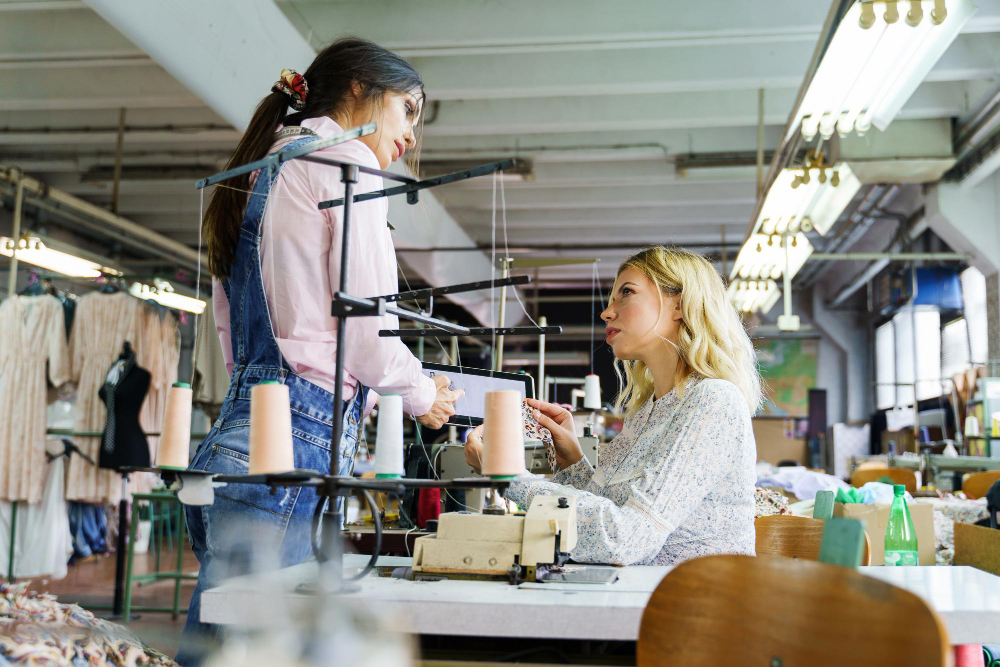
Today, modern tools help companies work faster and smarter. With new systems, machines, and software, industrial production becomes more efficient.
These are some of the most important changes:
Automated production
Automated production means using machines to do jobs that people used to do by hand. These machines can work all day, every day, without stopping. This helps factories make more products in less time.
It also reduces mistakes because machines follow exact steps with great precision. The result is better quality and less waste, saving money over time.
Automated systems are a big reason why the U.S. keeps its place in global industry. They help companies stay competitive and meet growing demand.
Learn more: Explore the benefits of industrial technology in the fashion sector
Artificial Intelligence
AI helps machines learn and make smart choices. In factories, Artificial Intelligence can predict problems before they happen. It looks at data and finds ways to improve the process.
It also supports planning and design, suggesting better ways to make a product.
As AI tools get better, more companies use them. They help the industry move forward with smarter and faster decisions.
Digital simulation
This technology lets companies test ideas in 3D before making them real. They can create a garment in a virtual space and see how it works.
By testing different ideas, companies can choose the best one before starting production. That way, they avoid waste and delays.
Automate your industrial production with Audaces solutions
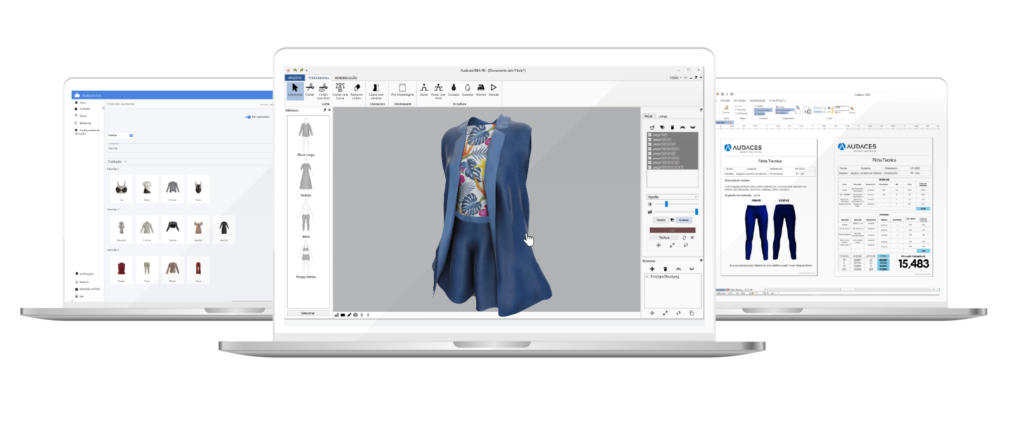
Audaces360
Audaces360 integrates cutting-edge digital innovations to optimize workflows in the textile and apparel industry.
It caters to companies of all sizes and types, offering the flexibility to scale with your business needs.
All solutions were carefully developed to address the specific challenges of the field. They streamline the design and production processes, saving valuable time and resources.
The platform boasts a comprehensive range of functionalities, including pattern making, marking, collection management, vector drawing, and 3D creation.
In addition, a fashion Artificial Intelligence to assist you along the way.
Audaces Cutting Room
By embracing cutting-edge technology, garment manufacturers can achieve significant improvements in the production process. From greater design flexibility to enhanced efficiency and reduced costs.
This is where Audaces Cutting Room steps in! Our experts will thoroughly assess your company’s needs and create a comprehensive report.
Then, our team will develop a personalized project to achieve your goals and unlock your company’s full potential.
Rely on Audaces’ cutting-edge machinery to automate your production process. Achieve impeccable cuts on curves and details, speeding up your deliveries and minimizing fabric waste through automation.
Discover Audaces360 and unlock a world of possibilities for fashion design and production. Explore our comprehensive suite of solutions today!
FAQ
The United States plays a key role in shaping the economy and supporting many sectors. From cars to clothing, machines to medicine, this production touches nearly every part of life.
Manhattan, Los Angeles, Charlotte, and Miami.
Automated production, Artificial Intelligence, and digital simulation.


